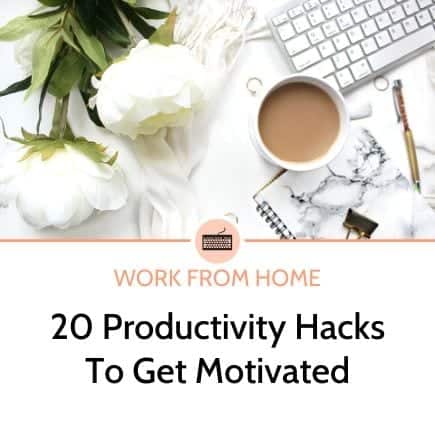How to Stop Emotional Spending – Recognising and Responding to Triggers
Posts contain affiliate links, see disclosure for more details.
The other day, I was having a bad day. The kind of day where my kids wouldn’t listen to a single thing I had to say. The kind of day where the noise felt unending and the house was a mess and I had just had enough.
I felt tired and stressed out. So to try and make myself feel better, I spent £22.49 that I couldn’t really afford on Domino’s Pizza.
And to be fair, for a little while I did feel a bit better. But not long afterwards I started to feel bad for overeating and overspending and was thinking about what I could have spent that money on instead!
The problem is, those days are often. And spending that amount of money regularly is unsustainable.
This is just one example of emotional spending. And it’s not uncommon either, we’ve all heard the term ‘retail therapy’ right?
Money is an emotional thing.
Perhaps not for everyone, but for most people our emotions and our finances are intertwined and our spending can fluctuate based on our varying emotional state.
Emotional spending can lead to buying things you don’t particularly need or want, as a result of feeling stressed, anxious, bored, sad, or even happy!
Whilst it might not be possible to completely remove emotions from our spending habits, there are some steps we can take to try and limit the negative effects of emotional spending on our finances.
This is important because in some cases emotional spending can also escalate into compulsive spending, which can lead to acquiring debt, hiding from loved ones and feeling unable to stop.
Overcoming Emotional Spending – 5 Easy Steps
1. Learn to recognise emotional spending habits.
This will vary from person to person. So for me, like I said above, when I’m feeling a bit low, I’m often tempted to spend money on takeaway food, which doesn’t help my wallet or my waist line!
Others might buy new clothes to cheer themselves up when feeling down or spend lots of money on gifts for others.
Others still might go on a shopping spree every payday or after getting a pay rise because they feel happy and flush with money.
Or maybe for some emotional spending happens in online shopping, perhaps at night while they struggle to sleep.
Learning to recognise emotional spending patterns and identify the triggers is the first step in being able able to combat them.
2. Create barriers
One way to try and avoid emotional spending is to try to stop yourself being able to do it.
For example, to try and stop myself overspending on takeaway food when I’m feeling low, I could make sure I keep some easy takeaway style food in the freezer, so I can still have a nice effort free dinner, but with a much lower cost.
Here are some ideas to limit emotional spending:
-
Set a budget for ‘fun’ or unnecessary spending
It’s not bad to treat yourself every now and then, but it’s important that it doesn’t have a negative impact on your finances.
Deciding on an affordable amount of money for ‘uneccesary spending’ means that you can still buy things to treat yourself, but you can do it guilt free, knowing that your budget is still in place.
-
Limit your access to online shopping
If you have a tendency to overspend on online shopping, try limiting your access to your online shopping accounts with parental control settings. You could also try not saving your credit card information in your accounts.
Obviously this wont stop you being able to shop full stop, but sometimes just having an extra obstacle in place can help you pause and consider whether you really need to buy whatever it is you’re looking at.
-
Leave your cards at home
If your emotional spending is more linked to impulse buying while out and about, an easy way to combat this is to simply leave your cards behind when you go out.
-
Block ads
If you’re easily swayed by adverts and they often tempt you to buy, installing an adblocker on your computer or phone could be a good way to avoid that impulse.
-
Try and sleep on it
Getting into the habit of ‘sleeping on it’ when deciding whether or not to buy something is a great way to help curb emotional spending. Often you find once you’ve waited 24 hours, the feelings have passed and you have more time to consider whether you still want to buy or not.
3. Find other activities
Try to discover other ways of making yourself feel better that don’t involve money.
Some people swear by exercise as a great way to feel good and release endorphins. Going for walks can help with clearing your head and reducing stress. Listening to your favourite music can be a quick pick me up.
Whatever it is, finding an alternative activity that helps you feel more positive can give you something else to turn to when you recognise those emotional spending triggers pop up.
4. Make your financial goals clear
Having a clear idea of what your financial goals are and what you want to achieve is a great way to give yourself more motivation which in turn can help with stopping emotional spending. If you can ask yourself ‘will this help me towards my goal?’ before spending money and the answer is no, hopefully the incentive to achieve the financial goal will help combat the urge to spend.
You could even type up your goals or a progress monitor and display them somewhere, to stay reminded of them.
5. Find some support
Remember that lots of people struggle with emotional spending, so you’re not in it alone! Talking to trusted friends, family or even online therapists such as BetterHelp.com can really help to hold you accountable to keeping your spending habits safer and making good financial decisions. Plus, just the act of talking to someone can be cathartic and improve our mood.
You might also like:
- How To Stop Living Paycheck to Paycheck >>
- 9 Easy Budgeting Tips >>
- 7 Steps To Pay Off Debt Faster >>
Pin it!







